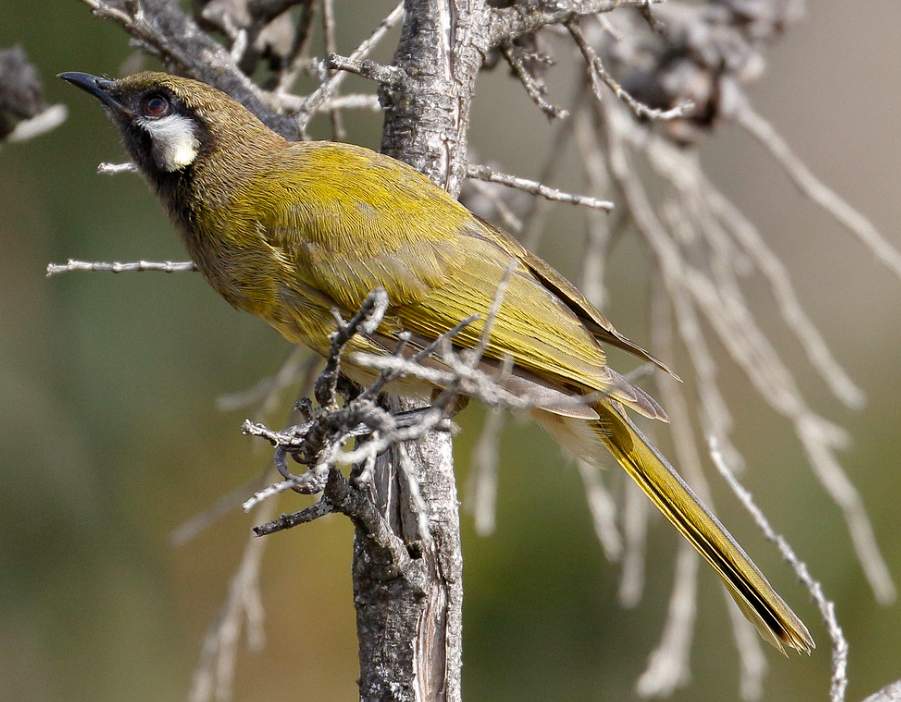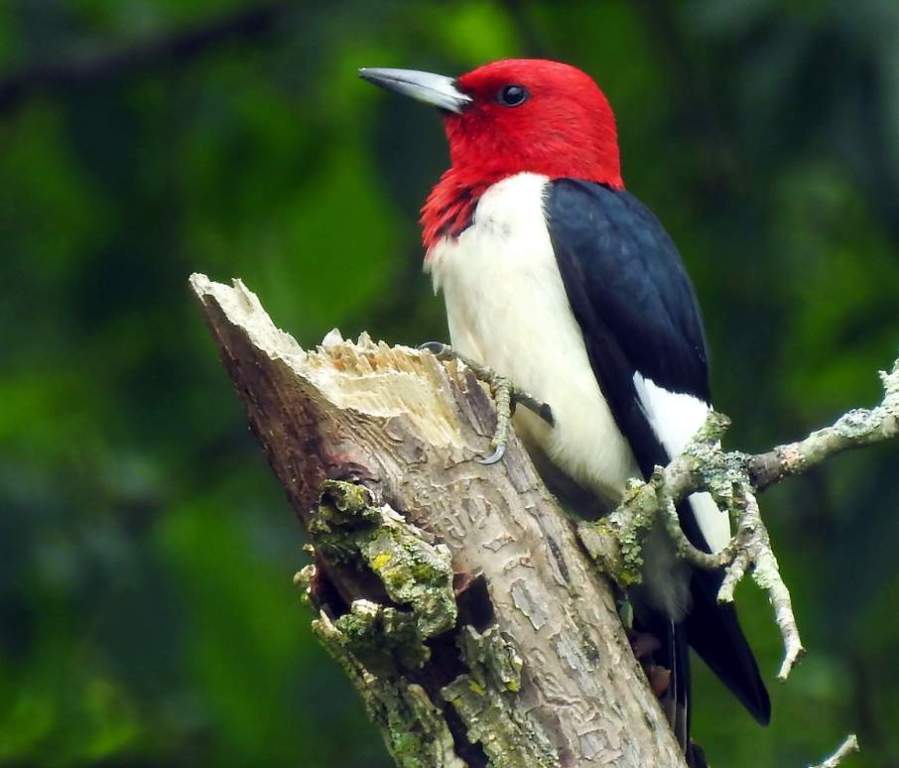Habitat: The white-eared honeyeater (Nesoptilotis leucotis) is unlike most of its relatives; it is not communal, rarely gathers at flowering food trees, and never forms coherent colonies. Despite their relatively unselective habitat preferences, they can be found in many different forest and woodland types, either on the edge or inside.
Rather, established males or pairs hold large, well-spaced territories year-round, rarely wandering far except in the Australian Alps, where they vacate for lower altitudes in autumn and winter. There are still some birds in the cold months. Habitats occupied are varied, from coastal heath to wet sclerophyll forest, alpine woodland, and Mallee inland around southern and eastern Australia.
However, close-packed eucalypts and shrubberies are common to all. White-eared honeyeaters and yellow-faced honeyeaters have similar feeding strategies. The yellow-faced honeyeater has shown aggressive behavior toward the white-eared honeyeater.

Feeding: It is often thought that they are nectarivores, but they also consume insects. There, the birds feed, usually singly, from the middle of shrubs into the lower tree canopy. Much gleaning is done in the foliage, where birds gather manna and honeydew from insect-damaged leaves. They also spend more time than other honeyeaters on the trunks and main branches, hopping sideways along and probing in and under the bark for beetles and spiders. Their bills are short, but they do not visit flowers for nectar. When they do, however, they often use the ploy of all short-billed honeyeaters, that of poking a hole into the base of a flower through which to suck nectar. Established males or pairs advertise territory with resounding chop and cher-up calls year-round, but mostly during breeding from vantage perches in tree and shrub crowns.
Size: White-eared honeyeaters measure about 170 to 210 mm long.
Identification: Both sexes look alike. The male bird is larger. The crown and hind neck are rich black with gray streaks. The rest of the upper parts, wings, and tail are deep citrine-green. The face, throat, and upper breast are black with a white ear patch. The rest of the underparts are pale yellow-green. Eyes are blue-grey. The bill is black. The feet are deep gray. The immature bird is duller than adults; it has an olive green crown, a dusky gray face and throat, and a cream-yellow ear patch.
Life span: Several Australian honeyeater species have average lifespans of 10 to 15 years, but the white-eared honeyeater’s lifespan is unknown. White-eared honeyeaters are likely to be found somewhere in this range.
Vocalizations: White-eared honeyeater sounds like chok; chop; cherry-bob; cher-up-notes rolled. The calls are light ringing, cherry wheat, and cherry wheat inland. Rapid rattling. No sustained song.
Nest: Nesting and breeding usually take place in August–December. Nests in a cup of bark strips and grasses bound with cobwebs, lined with fur or hair, slung from the rim 2-3 m above ground in a small bush or shrub, or among fallen debris.
Eggs: The white-eared honeyeater lays two eggs, sometimes three; white, lightly spotted with red at the larger end; oval, about 21 x 15 mm. Parents are responsible for breeding their chicks cooperatively.
Distribution: White-eared honeyeater is found in sclerophyll forests, alpine woodland, mallee, and coastal tree heaths around the southern and eastern mainland; in the west, north to about the Mulga line. In arid regions and the Mallee, all populations of race novaenorciae do not require an understory or shrub layer. Degraded, burned, or little-to-no-understory forests don’t appeal to them.
Races: There are four recognized races.
Taxonomy: John Latham described the white-eared honeyeater as Turdus leucotis in 1801. Previously known as Ptilotis leucotis torringtoni and Lichenostomus leucotis, it has undergone several reclassifications.
Family: There are 190 recognized Meliphagid species (honeyeaters and Australian chats), approximately half of which are found in Australia.
Genus: Nesoptilotis
Order: Passeriformes
Status: Least Concern
Read More: Yellow-spotted honeyeater (Meliphaga notate)







